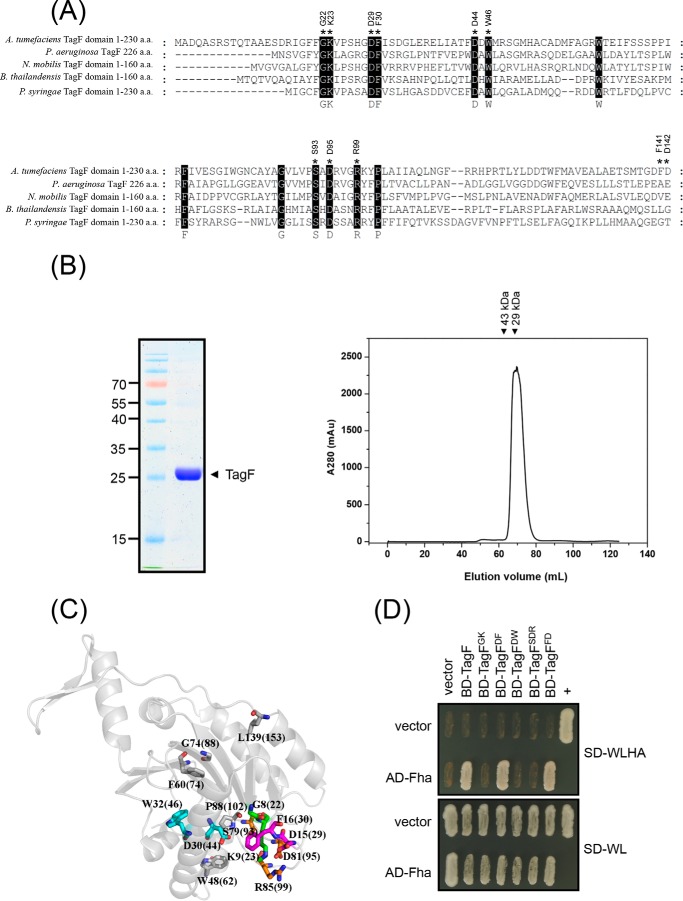Figure 6.
Conserved amino acid residues of TagF are critical for TagF–Fha interaction in A. tumefaciens. A, amino acid sequence alignment of TagF or TagF domain orthologs from selected bacterial species. Conserved amino acid residues are highlighted in black, and those used for mutagenesis are indicated with an asterisk. Sequences were aligned and highlighted by use of ClustalW2 (http://www.ebi.ac.uk/Tools/msa/clustalw2/). (Please note that the JBC is not responsible for the long-term archiving and maintenance of this site or any other third party hosted site.) Part of the aligned result is shown here, and the fully aligned result and full information for bacterial strains and protein accession numbers are shown in Fig. S3A. B, Agrobacterium TagF protein is present as a monomer on gel filtration analysis in vitro. Purified His-tagged TagF domain (aa 1–214) was analyzed by SDS-PAGE. The proteins analyzed and molecular weight standards are shown on the right and left, respectively. His-tagged TagF proteins were further analyzed by use of a Superdex 75 16 × 60 column, and the elution profiles were recorded as absorbance at 280 nm showing that His-tagged TagF elutes as a single peak (∼26 kDa monomer). C, relative positions of the conserved amino acid residues in P. aeruginosa TagFPa protein revealed as a monomer with crystal structural information according to the X-ray crystal structure of P. aeruginosa TagF monomer (Protein Data Bank entry 2QNU). The corresponding conserved amino acid residues of A. tumefaciens TagF are indicated in parenthesis. D, yeast two-hybrid protein–protein interaction results with Fha and various TagF proteins. SD−WL medium (SD minimal medium lacking Trp and Leu) was used for selecting plasmids. SD−WLHA medium (SD minimal medium lacking Trp, Leu, His, and Ade) was used for the auxotrophic selection of bait and prey protein interactions. The positive interaction was determined by growth on SD−WLHA medium at 30 °C for at least 2 days. The positive control (+) showing interactions of SV40 large T-antigen and murine p53 and negative control (vector) are indicated.

